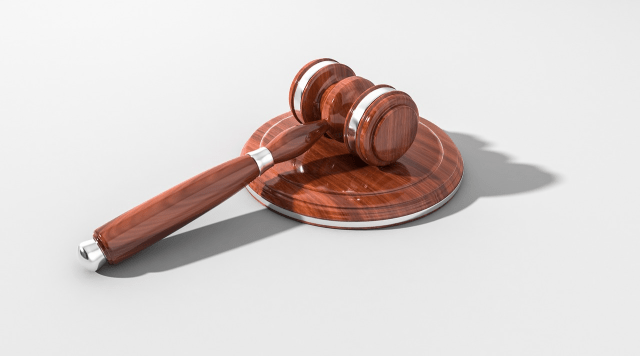
Construction sites are inherently risky environments where workers, contractors, and visitors are exposed to a variety of hazards daily. According to occupational safety reports, thousands of construction-related injuries occur each year, some of which are fatal. Understanding the common causes of construction site accidents and the legal protections available can help workers safeguard themselves and ensure they receive proper compensation when injuries occur.
Understanding Construction Site Hazards
Construction work involves heavy machinery, elevated work areas, hazardous materials, and complex operations. Even with strict safety protocols, accidents remain a significant concern. Employers are required to follow occupational safety standards, but lapses in training, equipment maintenance, or supervision can result in severe injuries.
Some of the most frequent hazards include:
- Falls from Heights – Workers operating on scaffolds, ladders, or roofs are at high risk of falling, particularly if safety harnesses or guardrails are not used correctly.
- Electrical Accidents – Contact with live wires or faulty electrical systems can cause electrocution or severe burns.
- Struck-by Incidents – Falling tools, debris, or moving vehicles pose threats to individuals on site.
- Caught-in/between Hazards – Workers can be crushed or trapped between heavy equipment or collapsing structures.
Common Causes of Construction Site Accidents
Understanding the root causes of construction accidents is crucial for both prevention and legal claims.
1. Lack of Proper Training
One of the most preventable causes of accidents is insufficient training. Workers who are unfamiliar with equipment, safety protocols, or emergency procedures are more likely to make mistakes. For example, operating a forklift without proper certification or using scaffolding incorrectly increases the risk of severe injury.
2. Unsafe Equipment
Construction sites rely heavily on tools and machinery, from cranes and bulldozers to power saws. Malfunctioning or poorly maintained equipment can cause catastrophic accidents. Common issues include:
- Hydraulic failures in heavy machinery
- Frayed cables on cranes
- Defective safety switches on power tools
Employers are legally obligated to maintain equipment and ensure it meets safety standards. Failure to do so can constitute negligence.
3. Slips, Trips, and Falls
Uneven surfaces, debris, wet floors, and inadequate lighting can all contribute to slip-and-fall incidents. Even minor missteps can result in broken bones or head injuries, especially when workers are carrying heavy loads. Ensuring clear walkways, proper footwear, and sufficient lighting are basic preventive measures that can significantly reduce these risks.
4. Hazardous Materials
Construction often involves exposure to chemicals, asbestos, lead, and other harmful substances. Without proper protective gear or training, workers can experience respiratory problems, skin burns, or long-term illnesses. Safety regulations require employers to provide Material Safety Data Sheets (MSDS) and personal protective equipment (PPE) for all hazardous substances on site.
5. Poor Site Management
Accidents are more likely when construction sites are poorly managed. Overcrowding, lack of supervision, and unclear safety protocols can lead to preventable incidents. Regular inspections, site audits, and active enforcement of safety rules help mitigate these risks.
High-Risk Work Areas
Certain areas of a construction site are particularly dangerous:
- Rooftops and Elevated Platforms – The leading cause of fatalities in construction is falls from heights. Workers must use fall protection systems like harnesses and guardrails.
- Excavation Sites – Trenches and holes can collapse unexpectedly, trapping workers. Proper shoring and slope techniques are critical for safety.
- Electrical Zones – Areas with live wires or exposed circuits require strict lockout/tagout procedures to prevent electrocution.
Common Injuries in Construction Accidents
Construction site accidents can result in a wide range of injuries, from minor cuts to life-altering conditions. Some of the most common injuries include:
- Fractures and Broken Bones – Often resulting from falls or being struck by objects.
- Head Injuries – Traumatic brain injuries can occur from falls, falling debris, or collisions with machinery.
- Spinal Cord Injuries – Severe accidents can lead to partial or complete paralysis.
- Burns and Electrocution Injuries – Contact with electricity, chemicals, or hot surfaces can cause serious burns.
- Respiratory Illnesses – Long-term exposure to dust, asbestos, or chemicals without proper protection can lead to chronic respiratory diseases.
These injuries not only affect the physical health of workers but can also cause financial strain due to medical expenses and lost income. For injuries that require ongoing medical attention, healthcare resources play a crucial role. Workers may rely on health care systems to manage treatment and rehabilitation.
Your Legal Rights After a Construction Site Accident
If you are injured on a construction site, understanding your legal rights is essential. Employers are responsible for providing a safe working environment under occupational safety laws. When accidents occur due to negligence, workers may be entitled to compensation.
1. Workers’ Compensation
Workers’ compensation is a no-fault insurance system that provides benefits to employees injured on the job. This can cover:
- Medical treatment and rehabilitation
- Lost wages during recovery
- Disability benefits for long-term injuries
While workers’ compensation provides essential support, it may not cover all damages, especially if third-party negligence is involved.
2. Third-Party Claims
In some cases, another party may be responsible for the accident. This could include equipment manufacturers, subcontractors, or property owners. Filing a personal injury claim against a negligent third party can result in compensation for pain and suffering, lost income, and long-term medical expenses.
For instance, if faulty scaffolding provided by a manufacturer collapses, the injured worker may file a claim against the company that produced the equipment. Legal professionals specializing in these matters can guide victims through the claims process.
3. Negligence and Safety Violations
Employers may be liable if safety regulations were violated, such as failing to provide PPE, neglecting equipment maintenance, or ignoring OSHA guidelines. Documentation of unsafe conditions, witness statements, and accident reports are critical pieces of evidence when pursuing a claim.
4. Filing a Claim
Navigating legal claims after a construction accident can be complex. Consulting with an experienced attorney ensures that your rights are protected, deadlines are met, and evidence is properly collected. Legal experts can also negotiate settlements or represent injured workers in court if necessary.
For anyone injured due to construction site negligence, contacting a Construction accident attorney is an important step in securing proper compensation and holding responsible parties accountable.
Preventive Measures to Reduce Construction Site Accidents
While legal rights are essential for addressing injuries, preventing accidents in the first place is equally important. Both employers and workers can take proactive steps:
1. Safety Training Programs
Regular and comprehensive safety training helps workers understand risks and proper procedures. Topics should include equipment operation, fall prevention, hazardous material handling, and emergency response.
2. Personal Protective Equipment (PPE)
Ensuring workers have access to helmets, gloves, safety glasses, harnesses, and protective clothing reduces the severity of injuries. Employers should enforce PPE use at all times.
3. Regular Site Inspections
Frequent inspections help identify hazards before they cause accidents. Checking scaffolds, machinery, electrical systems, and walkways can prevent many common incidents.
4. Clear Communication
Accidents often occur due to miscommunication. Establishing clear channels for reporting hazards, emergencies, and unsafe conditions improves overall site safety.
5. Compliance with Regulations
Adhering to OSHA standards and local safety regulations is mandatory. Compliance not only reduces accidents but also protects employers from legal liability.
Conclusion
Construction sites are complex environments where the risk of accidents is high. Common causes such as falls, equipment failure, hazardous materials, and poor management contribute to injuries ranging from minor cuts to life-altering conditions. Understanding these risks and your legal rights after an accident is crucial for protecting yourself and ensuring proper compensation.
Workers should take preventive measures seriously, including safety training, PPE use, and active participation in hazard identification. If an accident occurs due to negligence, consulting a Construction accident attorney can help secure compensation and hold responsible parties accountable.
Additionally, access to quality health care is critical for managing injuries and supporting recovery. By combining preventive safety measures with legal awareness, construction workers can reduce risk, protect their well-being, and navigate the aftermath of accidents more effectively.
About the author: Leland D. Bengtson

As a journalist, Leland Bengtson dedicated most of his career to law reporting. His greatest satisfaction is to convey legal matters to the public in a language that they can understand. He is active on various platforms and media outlets, writing about common legal issues that people confront every day. While medical malpractice is his strong suit, Leland covers plenty of other topics, including personal injury cases, family law, and other civil and even criminal legal matters.



